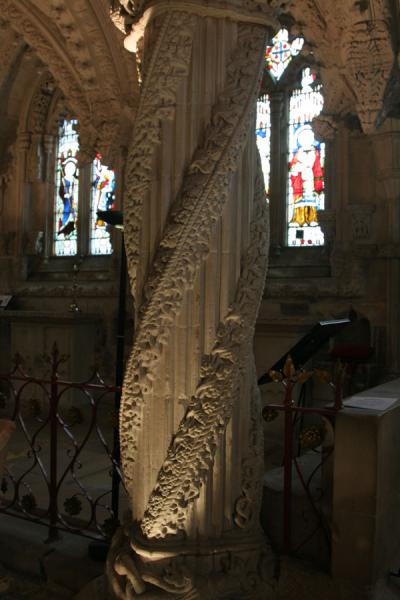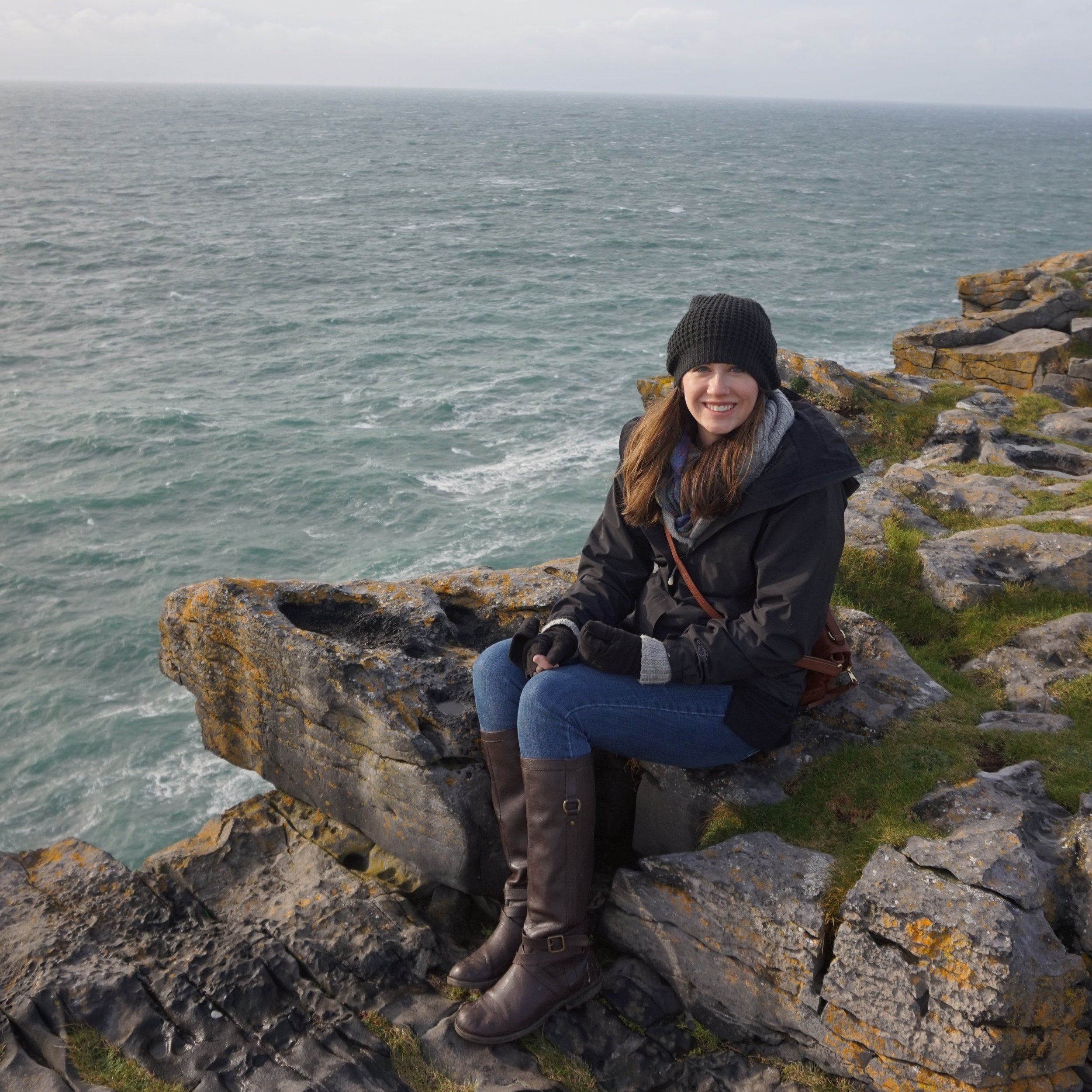The Holy Grail, Scottish Trekking and Sir Walter Scott, or Our Visit to Roslin

On our second day sightseeing during our 7 days in Scotland itinerary, we picked up our rental car and headed south from Edinburgh to the Scottish Borderlands.

Ye old Hyundai hatchback. Good on gas, not so great on style.
I don't know how many of you have ever driven in the UK, but it takes some getting used to. There's something completely creepy about driving on the wrong side of the road in the wrong side of the car. You shift on the left side, and all of the signals are on the opposite side. At least the pedals are still in the same position on the floorboard!
We first headed to the town of Roslin where Rosslyn Chapel is located. It's probably most famous for its appearance in Dan Brown's "The Da Vinci Code" for the hiding place of the Holy Grail, but it is actually so much cooler than just that. The interior of the Chapel has the most incredible carvings that I've ever seen. Check out the elaborately carved Apprentice Pillar:

Then, in the very front of the chapel, there are these odd boxes carved into the ceiling; according to a medieval music scholar, the carvings on these boxes represent music notes. You can learn more about this theory by watching this YouTube video on the "Rosslyn Motet":
Other fun facts about Rosslyn Chapel:
It is privately owned by the St. Clair family, who has been in possession of the property since the 1400s.
There is a vault underneath the Chapel, but it has been sealed for hundreds of years, and there is no plan to open it. No one knows what's there (which is where Dan Brown got the theory that it was the Knights Templar and the Holy Grail down there), but there was an ultrasound done of the chapel last year which found 12 tombs containing men in complete armor.
The Chapel is only partially finished from what the original builder planned. What you see today was only supposed to be the choir area, but after William St. Clair died, his son either ran out of money or lost interest in the property.

Landon in front of Rosslyn Chapel
While we were in the area, we decided to take a quick hike to nearby Rosslyn Castle, which is (you guessed it!) the residence for the Earl of Rosslyn, who also owns the Chapel.
The area was really popular with the Romantic poets and artists, including Sir Walter Scott (who wrote a poem about Rosslyn Castle--see below), Robert Burns (another Scottish poet) and Andrew Nasmyth (a Scottish painter). There's a myth that, when a Rosslyn baron dies, the building will appear to be on fire. Supposedly, there are also a few ghosts roaming around the woods, including a braying dog, a grey lady, and a knight in black armor. Luckily, we didn't run into any of the above on our trek.


Rosslyn Castle


And, to nerd up the post a little, I leave you with a poem that Sir Walter Scott wrote about the chapel, the St. Clair line, and the castle:
The Lay of the Last Minstrel
by Sir Walter Scott
Seem'd all on fire that
chapel
proud,
Where Roslin's chiefs uncoffin'd lie,
Each Baron, for a sable shroud,
Sheath'd in his iron panoply.
Seem'd all on fire within, around,
Deep sacristy and altar s pale;
Shone every pillar foliage bound,
And glimmer'd all the dead men's mail.
Blaz'd battlement and pinnet high,
Blaz'd every rose-carved buttress fair—
So still they blaze when fate is nigh
The lordly line of high St. Clair
.
There are twenty of Roslin's barons bold
Lie buried within that proud chapelle;
Each one the holy vault doth hold—
But the sea holds lovely Rosabelle!
And each St. Clair was buried there,
With candle, with book, and with knell;
But the sea-caves rung, and the wild winds sung
The dirge of lovely Rosabelle.
Check out our other adventures on this trip!
Have you ever been to Scotland? Do you like exploring old churches or ruins?

